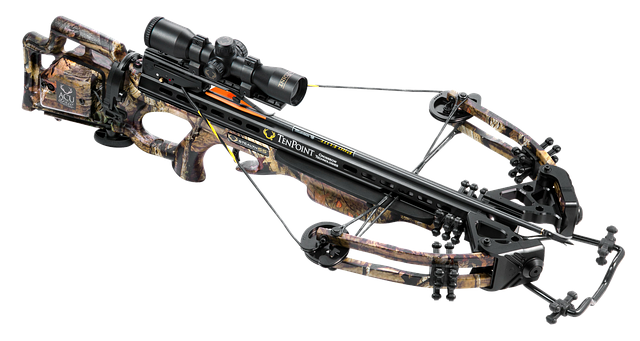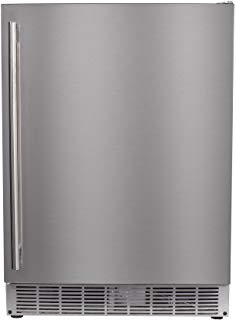
How does a hedge trimmer work?
How a hedge trimmer works depends first and foremost on whether it is a manual model or a device with battery or petrol drive. Manual hedge trimmers work in principle like any household shears. The two approximately 8 inches to 30 / 12 inch long blades with handle are connected crosswise by a simple joint. In the case of manual hedge trimmers, the longer the handles, the greater the force applied during cutting and the less force the user has to apply.
How To Perfectly Trim A Hedge
Best Hedge Trimmer Reviewed
In contrast, motorized hedge trimmers are equipped with two so-called cutting bars. Each of these cutting bars is equipped on both sides with several cutting edges in the form of a coarse saw. The two cutting bars lie flat on top of each other. Depending on how the hedge trimmer works, one of the beams is fixed and the other is moved back and forth longitudinally. This variant is called the counter-rotating knife. With the so-called double counter-rotating knives, both cutting bars move forward and backward in opposite directions. The advantage of this variant is the better cutting quality and the audible cutting performance. Due to a large number of blades, motorized hedge trimmers work very effectively, so that even large hedges can be cut back within a short time.
The distance between the blades determines the maximum branch thickness that can be cut with a hedge trimmer. Hedge trimmers with a very good cutting performance can cleanly cut branches with a maximum diameter of about 1 inch. Depending on the model, the cutting bars, also known as swords, have a length of about 12 inches to a maximum of 27 inches.
The different types of hedge trimmers
There are many different types of hedge trimmers available on the market from a number of well-known manufacturers. The four most important hedge trimmer species are:
- Manual hedge trimmers
- Cordless hedge trimmers
- Electric hedge trimmers
- Gasoline hedge trimmers
Each of these hedge trimmer species has its own advantages and disadvantages, which we will discuss in the following sections.
Manual hedge trimmers
Manual hedge trimmers are the simplest and cheapest hedge trimmers. They are offered with short and long handles made of plastic or wood. These hedge trimmers are relatively light and versatile. They are available with smooth and wavy blades. The serrated blades have the advantage that thicker branches and woody hedges can be cut more easily. The layplan is evenly smooth. Manual hedge trimmers with gear are available on the market especially for cutting thicker branches with a diameter of up to 0.80-inch. The cutting force is increased by the simple gear. Manual hedge trimmers with telescopic handles are available for pruning high hedges and shrubs, allowing pruning without a ladder.
Manual hedge trimmers are particularly suitable for small hedges and the pruning of individual shrubs. They can be used to precisely cut ornamental shrubs into shape.
- Easy to use
- Suitable for precise contour cuts
- Low price
- Easy to sharpen
- High effort required for woody hedges
- Only suitable for small hedges
Electric hedge trimmers
Electric hedge trimmers are ready for use at any time – provided they can be connected to the mains. They facilitate the pruning of even larger hedges and several shrubs considerably. The electric drive enables almost fatigue-free working over a longer period of time. Electric hedge trimmers are available with swords of different lengths. The operating noise is comparatively low and there are no exhaust gases. The disadvantage of the electric models is that they have to be connected to the mains via a power cable. Many garden owners find the cable annoying, especially when higher hedges have to be cut on a ladder. The hanging cable also increases weight.
Electric hedge trimmers are ideal for pruning longer hedges and several bushes and shrubs. One advantage of these motor-driven hedge trimmers is their comparatively low purchase price. In addition, they do not require a great deal of maintenance. However, their radius of action is limited to the length of the electric cable.
- Favorable purchase price
- Effortless cutting of large hedges
- Suitable for contour cuts with short swords
- Dependent on a mains connection
- The restricted radius of action
- Inconvenient handling due to the power cable
Cordless hedge trimmers
Cordless hedge trimmers have become increasingly popular in recent years. The reasons for this are independence from a power connection, the unlimited radius of action and the quiet operation without exhaust gases. Modern cordless hedge trimmers are comparable to electric hedge trimmers in terms of performance. However, they have the advantage that they do not have to be connected to the mains.
High-performance lithium-ion rechargeable batteries sometimes enable very long running times, so that rechargeable hedge trimmers can also be used for pruning larger hedges. According to Stiftung Warentest, battery life has increased significantly in recent years. By the way, the batteries of the battery hedge trimmers of some manufacturers can be used for different devices. This makes it possible to significantly reduce the cost of buying several gardening tools.
Cordless hedge trimmers are suitable for pruning hedges and shrubs in gardens of any size. They are available with swords of different lengths. Thanks to the rechargeable battery, they offer the same unlimited radius of action as a petrol-powered hedge trimmer. Bushes and hedges with fine branches can be cut effortlessly with these hedge clippers. However, the overall cutting performance is slightly lower than that of models powered by a petrol engine. Their weight is usually somewhat higher than that of electric hedge trimmers because of the battery.
- The unlimited radius of action
- Independent of the power grid
- Low operating noise
- Simple operation
- No exhaust
- Good cutting performance
- Higher weight due to the battery
- Comparatively high price
Gasoline hedge trimmers
Hedge trimmers powered by a petrol engine are the most powerful models. The petrol engines offer sufficient power for cutting strong branches and dense hedges. Their radius of action is unlimited, as they are independent of the power grid. Every now and then you just have to top up some gasoline. These hedge trimmers also have no power cables to disturb when working on a ladder. However, they have the disadvantage that they are very noisy during operation and produce disturbing exhaust gases. Another disadvantage is the high weight and the high maintenance effort compared to other hedge trimmers.
Petrol hedge trimmers are suitable for cutting back very large hooks. With them, you can also cut thicker branches without any problems. Due to their independence from an electricity connection and the unlimited radius of action, they are also popular in the commercial sector.
- The unlimited radius of action
- Very good cutting performance
- Suitable for commercial use
- Loud operating noise
- Exhaust emissions
- High weight
- High price level
What to look out for when choosing a hedge trimmer?
When choosing a hedge trimmer that is suitable for your own garden, you should consider several points. Certain selection criteria apply to all types of hedge trimmers. In addition, there are some points that are specific to different species. The same selection criteria apply to all hedge trimmers:
- Maximum cutting length
- Maximum cutting thickness
- weight
- ergonomics
- Safety and security
Maximum cutting length
The maximum cutting length should be selected to suit the size of the hedge to be cut. The higher and longer the hedge is, the greater the cutting length of the hedge trimmer should be. The choice of cutting length is limited for manual hedge trimmers. For motor-driven hedge trimmers, on the other hand, the choice ranges from about 12 inches to about 27 inches.
Maximum cutting thickness
When choosing a hedge trimmer with the right cutting performance, it is worth looking in the garden to determine approximately how thick the branches to be cut are. Motor-driven hedge trimmers are usually able to cut branches with a thickness of ten to 0.6 inches without any problems.
weight
The weight of a hedge trimmer is certainly the most important selection criterion, along with the length and thickness of the cut. The lighter the hedge trimmer, the longer you can work with it without getting tired. Please note that battery-powered hedge trimmers are generally somewhat heavier than electric hedge trimmers. The heaviest hedge trimmers have a petrol engine.
ergonomics
The ergonomics of a hedge trimmer also play an important role. It has an influence on how long the machine can be operated without fatigue. Non-slip handles ensure a secure hold and prevent a cramped posture. With motorized hedge trimmers, balanced weight distribution and a sensibly placed second handle ensure comfortable and largely fatigue-free working over a longer period of time. High-quality models also have an anti-vibration system.
Safety and security
The safety issue primarily concerns motor-driven hedge trimmers. Most of these machines are equipped with two switches, both of which must be operated simultaneously for the engine to run. This prevents an accidental switching on with only one hand and reduces the risk of injury.
Selection criteria for manual hedge trimmers
When choosing a manual hedge trimmer, you should consider whether corrugated or smooth blades are more suitable. Manual serrated hedge trimmers usually cut branches more easily and cleanly. If thick branches have to be cut, a manual hedge trimmer with gear is recommended.
Selection criteria for cordless hedge trimmers
In addition to the weight, battery life and charging time are the most important selection criteria for a battery-powered hedge trimmer. The higher the runtime, the better. The loading time is of course exactly the opposite: it should be as short as possible. If you already own a battery-powered gardening tool, you can save a lot of money by using the battery for a new hedge trimmer. Various manufacturers offer their cordless hedge trimmers without their own battery.
Selection criteria for electric hedge trimmers
One of the most important criteria when selecting an electric hedge trimmer is the engine power. The motor power for electric motors is given in watts. Particularly with electric hedge trimmers with long swords, which are intended for working strong hedges, the motor power should be sufficiently high.
Selection criteria for petrol hedge trimmers
The petrol hedge trimmers from the various manufacturers hardly differ in terms of engine performance. However, an important criterion is the noise level during operation of the hedge trimmer. Unfortunately, there are no really quiet petrol hedge trimmers. When working with a petrol hedge trimmer, hearing protection should always be worn to prevent hearing damage.
Tips for maintenance and care of hedge trimmers
Depending on the type of drive, hedge trimmers require different levels of maintenance and cleaning, so that they can work reliably for many years. All hedge trimmers should be thoroughly cleaned after use. If the hedge trimmer is not used during the winter, the blades should be rubbed with a preservative oil to protect them against rust attack. In principle, electric, battery and petrol powered hedge trimmers should spend the winter in a cool and dry place. A damp cellar room is not suitable for storage.
The least amount of maintenance is required for manual hedge trimmers. Blades that have become dull can be sharpened with a fine whetstone and some skill. This is especially true for smooth blades. For serrated grinding, a little more experience is required to achieve a good result. From time to time the joint of a manual hedge trimmer should be lubricated with one to two drops of oil. The oil ensures that no rust can form in the joint and that the two scissor arms remain easily movable. The blades of motorized hedge trimmers should also be oiled from time to time. For example, biodegradable lubricating oils can be used for chain saws.
The teeth of the shearing blades of motor-driven hedge trimmers can also be resharpened with a whetstone. However, this work is relatively complex and requires some experience to avoid ruining the shear blades. It is often better to have them resharpened by a specialist company.
The battery of battery-operated hedge trimmers also requires a certain amount of care. If the device will not be used for a longer period of time, for example during the winter, the battery must be removed from the hedge trimmer and stored in a dry and cool place. Depending on the manufacturer, the battery can also be stored in the charger. If the battery cannot be stored in the charger, it should be fully charged before being stored in a suitable location. Batteries maintained in this way provide energy for many years for the powerful and smooth operation of a battery-powered hedge trimmer.
The maintenance effort for petrol hedge trimmers is the greatest. With them, you should check the carburetor and the spark plug regularly. Both are necessary to ensure maximum engine performance while keeping fuel consumption as low as possible.
Gasoline hedge trimmers start in spring without problems
It is recommended to empty the fuel tank of a petrol hedge trimmer before wintering. Petrol ages. Old petrol burns badly and can cause problems in the following spring. Fresh petrol makes it easier to put the hedge trimmer into operation in spring.
Accessories for hedge trimmers
Hedge trimmers do not require a lot of accessories. For all hedge trimmers, however, the purchase of a biodegradable lubricating oil is recommended. The joints and cutting bars can be regularly lubricated with a few drops of oil.
With a battery-powered hedge trimmer, it may be worth buying a spare battery. If a second fully charged battery is available, the work may only have to be interrupted briefly to change the battery.
The protection of one’s own health is of course always the top priority when working with hedge trimmers. That is why safety glasses are perhaps the most important accessory. When working with a petrol hedge trimmer, you should order ear protection at the same time because of the loud petrol engines.





